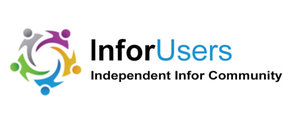Clinician Burden and Alert Fatigue Minimize Usefulness of CDS
Clinical decision support (CDS) systems have been around for decades as a component of medication ordering across many EHRs. Solutions such as First Data Bank, Medi-Span, and Multum were designed with the intended purpose of making medication ordering safer for patients by providing alerts to physicians for medication conflicts related to other medications, laboratory orders, or dietary orders. While the intent was good, the implementation and usage of CDS in computerized physician order entry (CPOE) applications created additional workflow burdens for the clinicians and, in many cases, bombarded the clinicians with alerts that had minimal safety or outcome consequences.
A recent study conducted on CDS nuance and fatal order performance within CPOE, designed by the University of Utah and Brigham & Women’s Hospitals and conducted by the Leapfrog Group, demonstrated little performance improvement for addressing either of these order alerts over two years. This would indicate that CDS solutions require a new design and approach for creating care alerts beyond CPOE.
As healthcare transforms into a new population healthcare delivery model that includes all modalities of care, it will become necessary to reevaluate CDS capabilities to include evidence-based medicine (EMB) protocols. The ability to design CDS support in this environment will require new workflow designs, interoperability capabilities, and alert management tools. The good news is that solutions with these functions and features are emerging.
Patient Care Decision Support (PCDS)Vision Based on EBM Protocols
As we move to standardizing care delivery, EBM protocols based on a patient’s diagnosis and comorbidities for continuous care across all modalities will become an essential capability for surviving in the value-based care reimbursement world. The CPOE application will not be connected to a special medication or pharmacokinetic CDS module. It will be connected to a CDS based on EBM protocols that assess not only medication compliance but also diagnostic and intervention compliance.
PCDS is an application that uses protocol algorithms derived from EBM data analytics that monitors patient data in the EHR and sometimes in population health solutions to flag variances from the protocols and identify treatment risk factors. Is the medication being ordered compliant with the medication list protocols? Are the diagnostic test orders compliant with the testing protocols? Have the appropriate respiratory and physical therapies been ordered? All these events will be monitored for completion and for being completed within protocol timeframes.
Events that do not occur, are not timely, or exceed the algorithm benchmarks will trigger alerts that will show up clinician workflows. In some cases, alerts may not only be displayed to the physician but to other clinicians as well. A medication alert will be displayed during the CPOE session and may also display for the pharmacist who reviews patient medication profiles. This approach for CDS alerts will likely drive patient safety and outcomes to higher levels.
Improved Care and Safety and Reduced Patient Risk
The ability to eliminate nuisance alerts will reduce clinician frustrations that can promote burnout. As the industry focuses on implementing new emerging technologies to improve application workflows and efficiencies, it will be important to establish effective CDS capabilities that supplement these new care delivery environments.
The emerging PCDS environments will accommodate clinician adjustments to the EBM protocols to ensure higher levels of adoption and compliance with the protocols. These protocols will be tailored to the patient populations that the clinicians are treating, and that will drive higher levels of care quality, patient safety, and expected outcomes. The ability to manage CDS alerts efficiently and effectively in this environment will be supported by higher levels of artificial intelligence (AI) capabilities.
The Players
The emerging PCDS solutions are represented by both U.S. and international companies:
- Infera (InferScience; US) CDS base on EBM care pathways
- RAMPmedical (Germany) multifactorial CDS algorithms
- READS (Tapa Healthcare; Ireland) – nursing CDS focus
- Curation Health – point of care CDS across care modalities
RAMPmedical’s multifactorial model is a good example of how different AI functions, statistical inference, and proprietary scoring algorithms can be implemented to generate alerts that are truly meaningful for supporting effective care delivery.
Success Factors
- A successful PCDS environment must be supported by a data analytics environment that can evaluate EBM protocols relative to patient outcomes on a timely and ongoing basis.
- Clinicians must be involved in the design and execution of the PCDS implementation, including any algorithm modifications they deem appropriate.
- PCDSplatforms must support the ability to easily integrate into EHR or population health application workflows and data streams. FHIR APIs are a good foundation for this capability.
Summary
PCDS represents a new approach for supporting clinicians as they deliver care in the new value-based reimbursement environment to populations of patients. Legacy CDS was based on supporting encounters of care to reduce patient safety risk for medication orders or for supporting care plan compliance for acute care patients. PCDS will be designed to evaluate and support patient care with EBM protocols across all episodes of care.
The standardization of care is usually met with some level of concern my most physicians. For PCDS to be accepted and adopted by physicians, they must feel comfortable in their ability to modify protocols based on their patient population data and experience. Modifications to protocol algorithms can then be monitored and compared to the base EBM protocol to determine whether these modifications are warranted. Physicians must also be able to determine where PCDS alerts are displayed in clinical application workflows to improve alert responses. PCDS solutions based on flexible architectures that allow protocol and algorithm modifications will improve physician trust in a new level of decision support.
Photo Credit: Adobe Stock, Rawpixel.com


